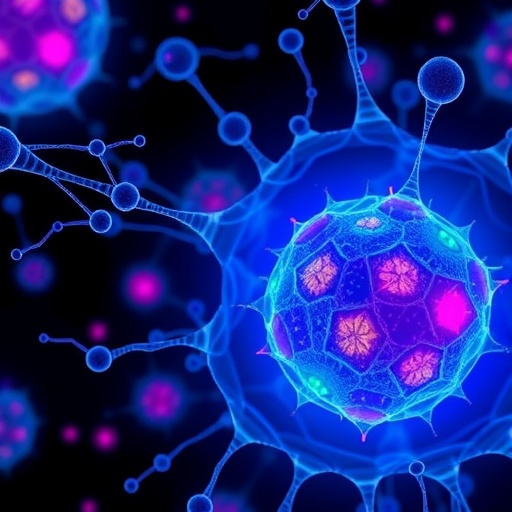Emerging Frontiers in Cancer Therapy: Harnessing Ferroptosis to Eradicate Cancer Stem Cells
In the relentless quest to revolutionize cancer treatment, recent scientific endeavors have spotlighted an innovative strategy targeting one of oncology’s most vexing enigmas—cancer stem cells (CSCs). These specialized cells, integral to tumor initiation and relapse, display formidable resistance to conventional therapies, undermining long-term treatment success. Cutting-edge research now reveals that exploiting ferroptosis, a novel form of regulated cell death intricately linked to iron metabolism and lipid peroxidation, offers a promising avenue to overcome CSC-mediated therapeutic resistance and improve patient outcomes.
Cancer stem cells distinguish themselves from the bulk of tumor populations through unique metabolic and molecular adaptations, granting them resilience in the face of oxidative insults. Unlike differentiated cancer cells, CSCs maintain a finely tuned redox balance that curbs intracellular reactive oxygen species (ROS) accumulation, enabling survival within the hostile tumor microenvironment. This ability to maintain low ROS levels, coupled with enhanced iron uptake mechanisms, fortifies their defenses against apoptotic or necrotic triggers elicited by standard chemotherapeutic agents. Consequently, CSCs may persist silently after treatment, seeding tumor recurrence.
Ferroptosis represents a paradigm shift in the understanding of programmed cell death. Unlike apoptosis, which involves caspase activation and DNA fragmentation, or necrosis characterized by uncontrolled cell lysis, ferroptosis hinges on the iron-dependent accumulation of lipid peroxides to lethal levels. Central to this process is the disruption of cellular antioxidant systems, particularly the cystine/glutathione/glutathione peroxidase 4 (GPX4) axis. GPX4 enzymatically reduces lipid hydroperoxides, preventing lipid membrane damage. When this protective mechanism falters, unchecked lipid peroxidation precipitates catastrophic membrane damage, culminating in ferroptotic cell demise.
The differential iron metabolism in CSCs serves as both their armor and Achilles’ heel. These cells exhibit pronounced iron uptake via transferrin receptors and reduced iron export, sustaining elevated intracellular labile iron pools. This iron accumulation catalyzes the Fenton reaction, generating highly reactive hydroxyl radicals that propagate lipid peroxidation. Intriguingly, while CSCs adeptly manage oxidative stress under physiological conditions, their dependence on iron-rich states predisposes them to ferroptosis if this delicate balance is perturbed. This vulnerability offers an exploitable therapeutic window.
Pharmacological induction of ferroptosis primarily revolves around impeding the cystine/glutathione axis, which is crucial for maintaining redox homeostasis. The transporter SLC7A11, responsible for cystine uptake, plays a pivotal role. Inhibiting SLC7A11 diminishes intracellular cysteine availability, thwarting glutathione biosynthesis and crippling GPX4’s capacity to detoxify lipid peroxides. This biochemical cascade heightens oxidative stress within CSCs, tipping the scales toward ferroptosis. Additionally, strategies that amplify iron accumulation or directly promote lipid peroxide generation can synergistically magnify ferroptotic susceptibility.
Technological innovations, particularly nanoparticle-mediated drug delivery systems, are propelling ferroptosis induction into practical realms. Nanoparticles engineered to selectively target CSCs can deliver iron or ferroptosis-inducing agents with high specificity, minimizing collateral damage to normal tissues. For example, iron oxide nanoparticles can augment intracellular iron, fostering lipid peroxidation, while co-delivered inhibitors of SLC7A11 or GPX4 disable antioxidant defenses. This orchestrated assault disrupts CSC survival strategies at multiple nodes, enhancing therapeutic efficacy.
The promise of ferroptosis-centered interventions transcends mere tumor reduction; they aim to dismantle the CSC reservoir responsible for metastasis and relapse. By overcoming CSC resistance mechanisms, ferroptosis induction has the potential to transform cancer treatment paradigms from transient suppression to durable eradication. This approach also complements existing modalities such as chemotherapy, radiotherapy, and immunotherapy, potentially overcoming multifactorial resistance through mechanistically distinct pathways.
Fundamental research into the molecular underpinnings governing ferroptosis and CSC biology continues to unravel complex regulatory networks. Transcription factors, epigenetic modifiers, and metabolic enzymes collaboratively modulate iron homeostasis, lipid metabolism, and antioxidant systems within CSCs. Understanding these interconnections not only refines therapeutic targeting but also reveals biomarkers predictive of ferroptotic responsiveness, enabling a personalized medicine approach tailored to individual tumor biology.
Despite promising preclinical data, clinical translation of ferroptosis-based therapies warrants cautious optimism. Challenges include selective targeting of CSCs within heterogeneous tumors, avoidance of ferroptosis induction in nonmalignant cells, and management of potential adverse effects stemming from systemic iron dysregulation. Addressing these obstacles necessitates rigorous in vivo studies, optimization of delivery platforms, and integration of combinational treatment regimens.
The therapeutic landscape is further enriched by discoveries illuminating the cross-talk between ferroptosis and the immune system. Emerging evidence suggests that ferroptotic cells release damage-associated molecular patterns (DAMPs), which can modulate immune responses within the tumor microenvironment. Harnessing this immunogenic dimension may enhance antitumor immunity and synergize with immune checkpoint inhibitors, potentiating holistic cancer eradication.
In summary, leveraging ferroptosis as a weapon against cancer stem cells epitomizes a burgeoning frontier in oncologic therapeutics. This strategy exploits the unique metabolic vulnerabilities of CSCs—a group long evading elimination—to disrupt their survival machinery selectively. Continued exploration of the ferroptotic pathways and their molecular regulators holds the promise of ushering in a new era of precision oncology, characterized by treatments capable of durable remissions and reduced relapse rates.
As research into ferroptosis deepens, collaborative efforts spanning molecular biology, nanotechnology, pharmacology, and clinical oncology will be paramount. These integrative approaches will accelerate the refinement and implementation of ferroptosis-based therapies, moving them from bench to bedside. Ultimately, this paradigm has the transformative potential to redefine cancer treatment, addressing one of its most intransigent challenges and improving lives worldwide.
Subject of Research: Ferroptosis in Cancer Stem Cells and Novel Therapeutic Strategies in Oncology
Article Title: Targeting Ferroptosis in Cancer Stem Cells: A Novel Strategy to Improve Cancer Treatment
Web References: http://dx.doi.org/10.1016/j.gendis.2025.101678
References: Luyao Wang, Ye Zhu, Chengying Huang, Qiuming Pan, Junxi Wang, Hongrui Li, Yudi Huang, Guozhong Yi, Zhiyong Li, Songtao Qi, Guanglong Huang, Shanqiang Qu, Targeting ferroptosis in cancer stem cells: A novel strategy to improve cancer treatment, Genes & Diseases, Volume 12, Issue 6, 2025, 101678.
Image Credits: Genes & Diseases
Keywords: Cancer stem cells, ferroptosis, iron metabolism, lipid peroxidation, GPX4, SLC7A11, ROS, nanoparticle drug delivery, oxidative stress, tumor microenvironment, cancer recurrence, therapeutic resistance




